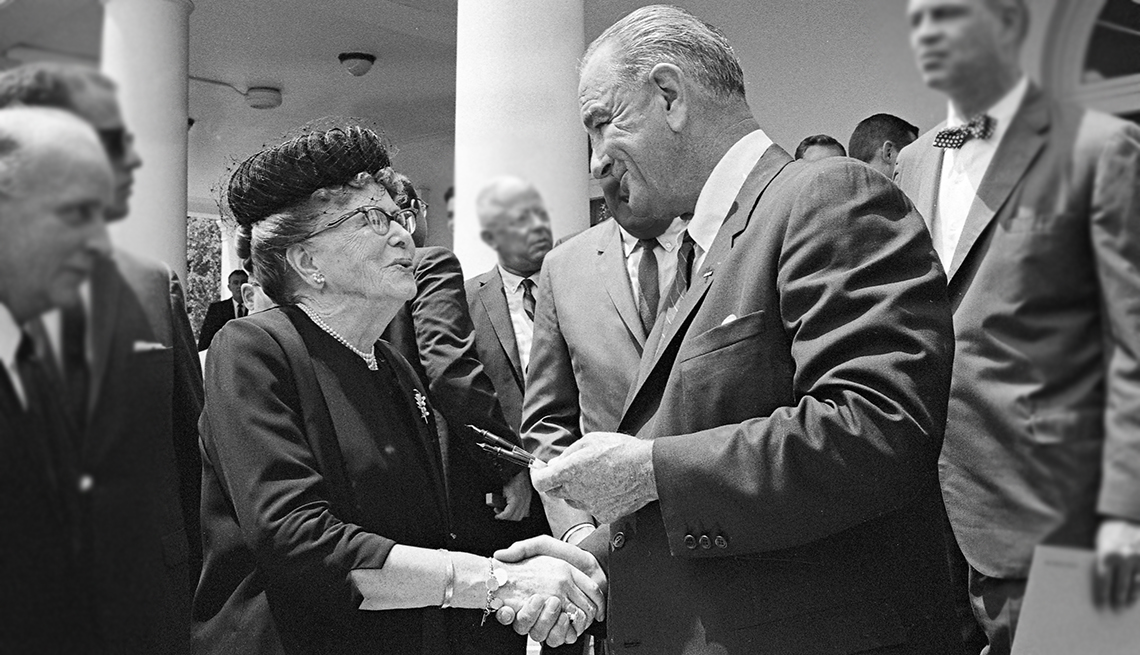
AARP Fights for Older Americans Act of 1965
- Select a language for the TTS:
- UK English Female
- UK English Male
- US English Female
- US English Male
- Australian Female
- Australian Male
- Language selected: (auto detect) - EN
Play all audios:
By AARP En español
One of the recommendations of the 1961 White House Conference on Aging concerned improving programs to assist older Americans. Federal, state and local assistance programs were limited, and
they spanned the jurisdictions of many departments, agencies and offices with no central focus or direction and coordination. The conference report minced no words: Efforts to remedy the
situation had been “sporadic, spasmodic, piecemeal, hesitant, and futile.”
There had been an Office on Aging in the Department of Health, Education and Welfare (HEW). Since it was within the office of the Commissioner of Welfare, federal programs for older adults
were stigmatized as “welfare.”
The Older Americans Act was introduced by Congressman John Fogarty of Rhode Island and Senator Patrick McNamara of Michigan in 1963 to “help older people maintain maximum independence in
their homes and communities and to promote a continuum of care for the vulnerable elderly.” The act would establish the U.S. Administration on Aging (AoA) and facilitate the creation of
state and area agencies on aging to address the social service needs of older people at the community level.
Building support for the Older Americans Act was AARP’s number one legislative priority in the years 1961 to 1965 and AARP’s first major successful grassroots advocacy campaign. Ernest
Giddings, AARP's legislative representative, said, “The bill meets the major organizational recommendations of the White House Conference on Aging and overcomes the present welfare stigma on
aging.” Dr. Ethel Percy Andrus, the founder of AARP, was the campaign’s leader, but AARP Executive Director William C. “Bill” Fitch played a prominent behind-the-scenes role in developing
and drafting the legislation.
“The Older Americans Act is to my mind one of the most significant laws ever passed by Congress."— William C. “Bill” Fitch, AARP Executive Director, 1959–1967
Bill Fitch had the background and experience. His strong working relationship with Congressman Fogarty predated his time with AARP. In 1958, while serving at the Dept. of Health, Education
and Welfare, Fitch helped the congressman draft legislation that created the 1961 White House Conference on Aging.
Throughout the legislative process AARP was in full swing. Testimony was presented before Congressional committees when appropriate. Supporting data and arguments were provided to members of
Congress as needed. Thousands of letters were written to individual senators and congressmen by AARP and National Retired Teachers Association members.